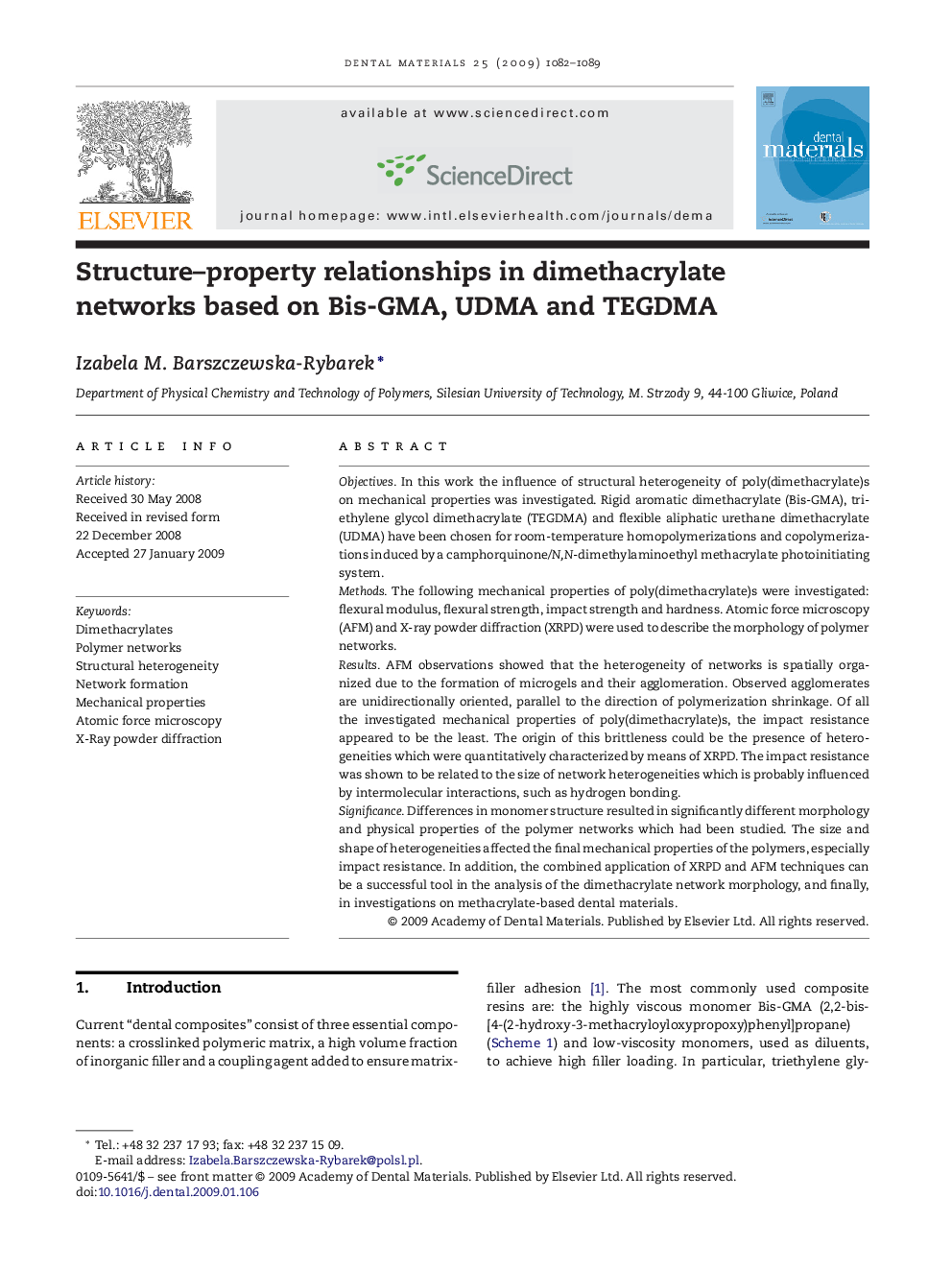| کد مقاله | کد نشریه | سال انتشار | مقاله انگلیسی | نسخه تمام متن |
|---|---|---|---|---|
| 1422176 | 986439 | 2009 | 8 صفحه PDF | دانلود رایگان |

ObjectivesIn this work the influence of structural heterogeneity of poly(dimethacrylate)s on mechanical properties was investigated. Rigid aromatic dimethacrylate (Bis-GMA), triethylene glycol dimethacrylate (TEGDMA) and flexible aliphatic urethane dimethacrylate (UDMA) have been chosen for room-temperature homopolymerizations and copolymerizations induced by a camphorquinone/N,N-dimethylaminoethyl methacrylate photoinitiating system.MethodsThe following mechanical properties of poly(dimethacrylate)s were investigated: flexural modulus, flexural strength, impact strength and hardness. Atomic force microscopy (AFM) and X-ray powder diffraction (XRPD) were used to describe the morphology of polymer networks.ResultsAFM observations showed that the heterogeneity of networks is spatially organized due to the formation of microgels and their agglomeration. Observed agglomerates are unidirectionally oriented, parallel to the direction of polymerization shrinkage. Of all the investigated mechanical properties of poly(dimethacrylate)s, the impact resistance appeared to be the least. The origin of this brittleness could be the presence of heterogeneities which were quantitatively characterized by means of XRPD. The impact resistance was shown to be related to the size of network heterogeneities which is probably influenced by intermolecular interactions, such as hydrogen bonding.SignificanceDifferences in monomer structure resulted in significantly different morphology and physical properties of the polymer networks which had been studied. The size and shape of heterogeneities affected the final mechanical properties of the polymers, especially impact resistance. In addition, the combined application of XRPD and AFM techniques can be a successful tool in the analysis of the dimethacrylate network morphology, and finally, in investigations on methacrylate-based dental materials.
Journal: Dental Materials - Volume 25, Issue 9, September 2009, Pages 1082–1089